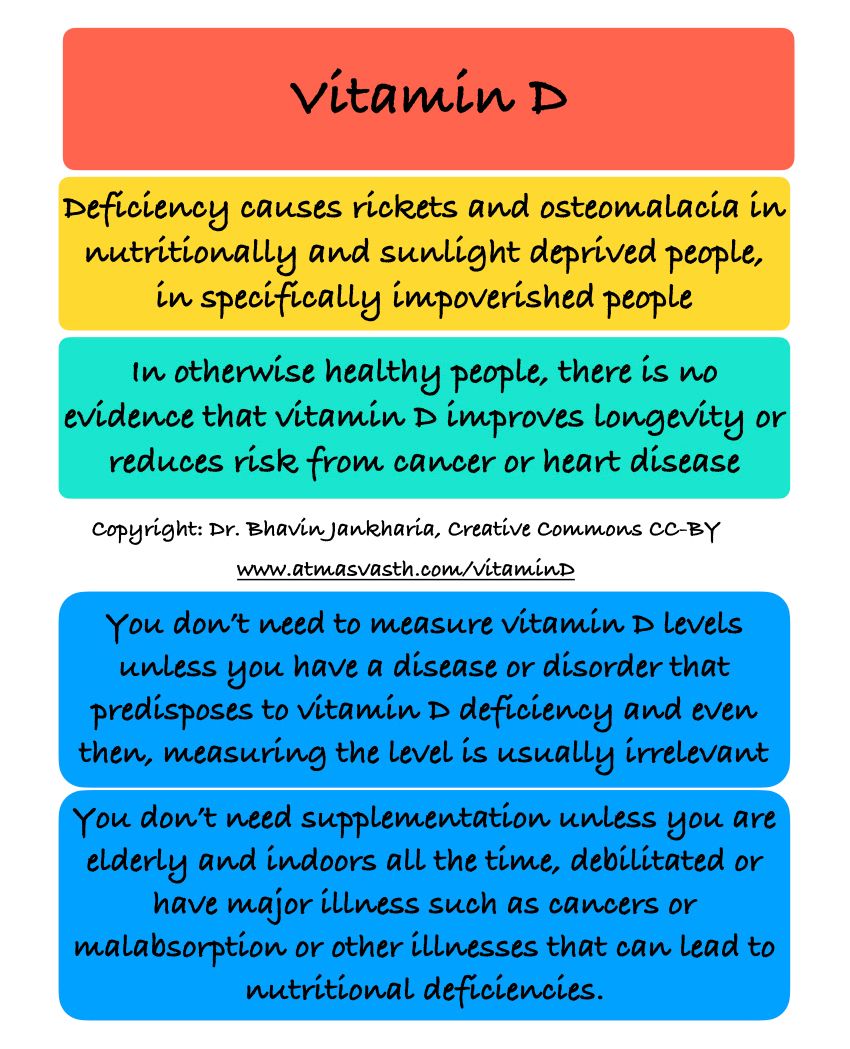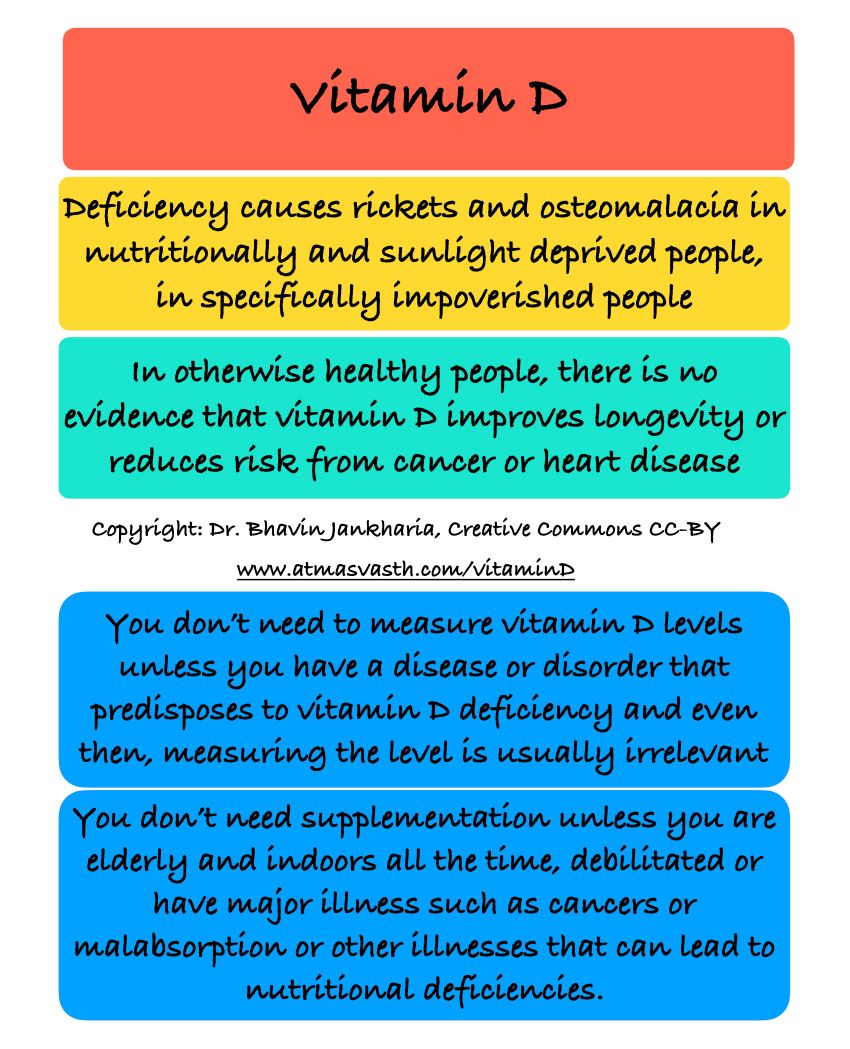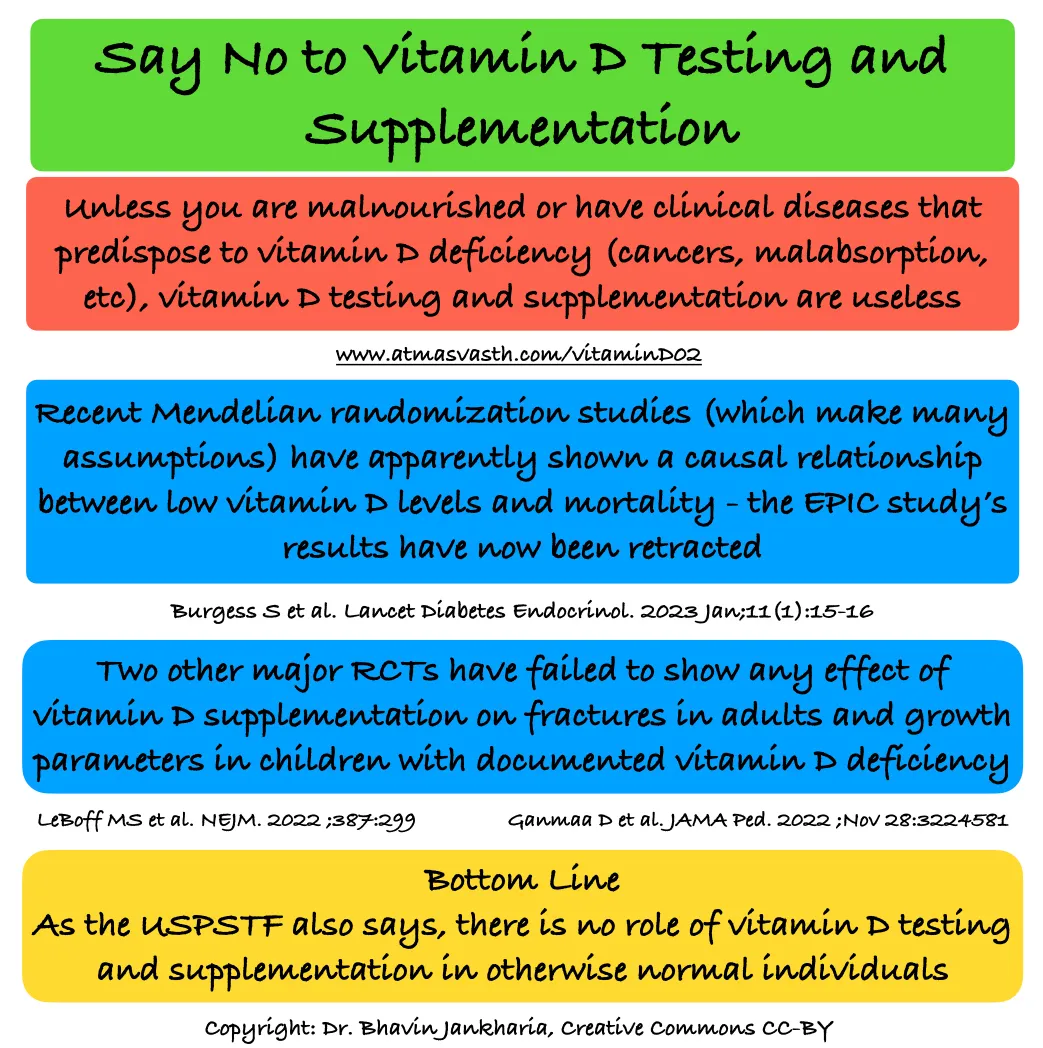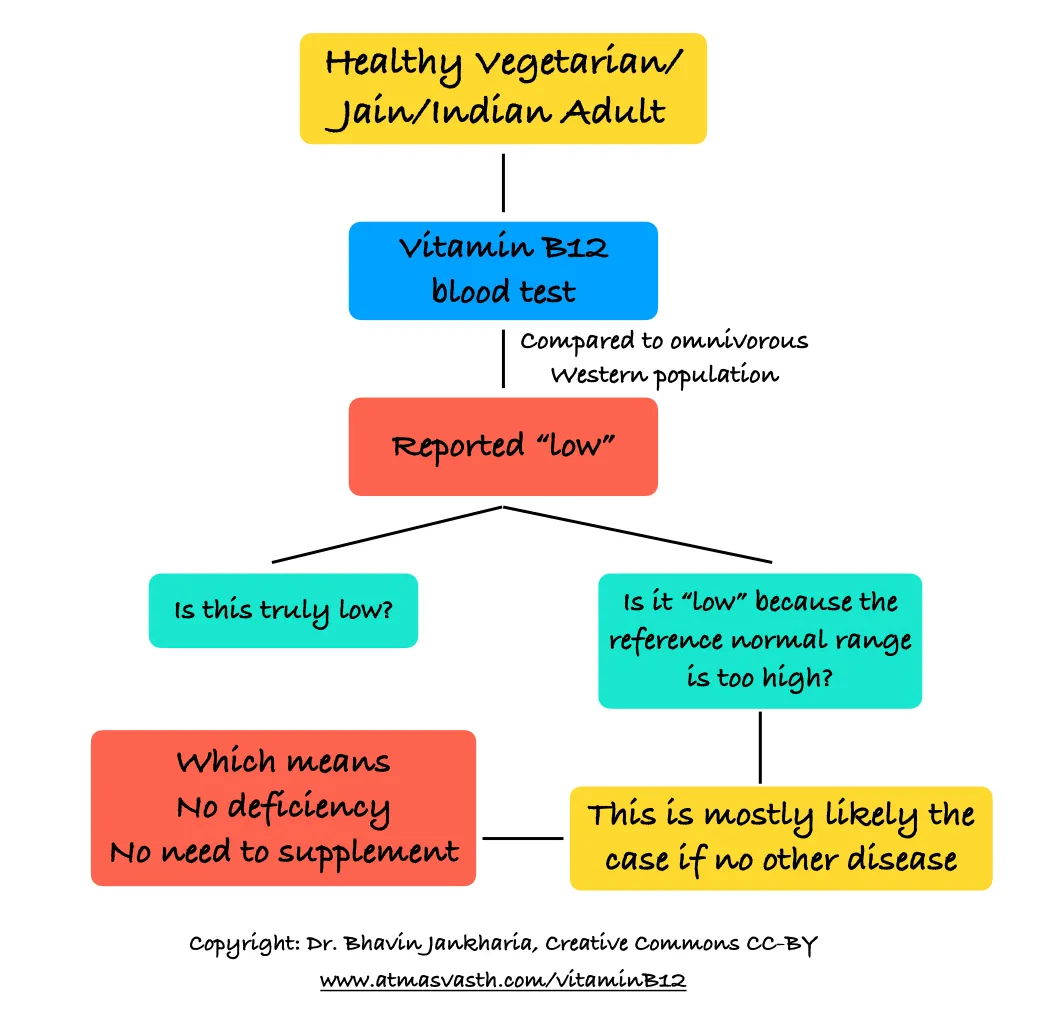The Hype and Hoopla Around Vitamin D
Vitamin D deficiency is likely overstated and over-"treated"

A recent study, the D-Health from Australia [1], looked at 21310 individuals above the age of 60 years (10645 placebo and 10660 receiving 60,000 IU of vitamin D each month for five years) to understand whether routine vitamin D supplementation in an unscreened population (i.e. those in whom no testing for vitamin D levels is done) is of use. The researchers found that vitamin D supplementation did not reduce all-cause mortality, or deaths from cancer or cardiovascular disease. There was a mild increase in cancer mortality in those who received vitamin D, but it was not clear whether this was true or a statistical aberration. The vast majority of participants including the placebo group had adequate vitamin D levels (vitamin D replete) on testing done later in the trial, suggesting that vitamin D supplementation in those who have otherwise adequate levels may not be justified or be of use.
Many people in India these days are routinely advised to get vitamin D levels done, including during so-called whole body health check-ups, or as part of a routine work-up for most diseases. Most international bodies including the USPSTF say that there is currently no justification for routine vitamin D supplementation in people living in the United States…nor is routine testing justified…and there is no reason why this is not true of India, too.
So let’s look at India. Multiple studies have described a prevalence of 20-90% of vitamin D deficiency, with most experts agreeing that at least 50% of Indians are likely to have insufficient or deficient levels of vitamin D [2].
Like with vitamin B12, the devil lies in the details. Most laboratories in India use a cut-off value of 30 ng/ml as normal, based on the 2011 recommendations of the Endocrine Society, which defines a normal vitamin D level to be above 30 ng/ml, insufficiency as 21-29 ng/ml and deficiency as less than 20 ng/ml. The National Institutes of Heath (NIH) on the other hand, mentions a normal cut-off of 20 ng/ml, 12-20 being insufficient and < 12 being deficient, which is also endorsed by the American Association of Family Physicians. The Indian Academy of Pediatrics has the same stance, though in children, defining normal levels as > 20 ng/ml, with insufficiency at 12-20 and deficiency, < 12.
The moment the normal cut-off becomes 30 rather than 20, a large number suddenly becomes insufficient - all those between 20 and 30 ng/ml, who would be considered normal as per the National Academy and Institute of Medicine Guidelines, would be considered insufficient as per the Endocrine Society guidelines. For e.g. a study done at CMC Vellore [4] showed that 44% of their patients in one year had vitamin D deficiency when defined as a value < 20 ng/ml, while 30.5% had insufficiency (20-30 ng/ml). If the cut-off for normality were to be changed to 20 ng/ml instead of 30, then all those 30.5% of patients (one third) supposed to have insufficiency, would be classified as normal, while just 10.4% of patients would be classified as deficient with values less than 10 ng/ml. Many of the so-called “insufficient” would also likely just be at the lower limit of normal of a bell-curve (10-20 ng/ml) [5].
To assume that more than 70-80% of the country or the world is vitamin D deficient just doesn’t make sense, especially in a sun-drenched country like India. Those who believe that there is a vitamin D deficiency pandemic [2] quote reasons ranging from lack of sunlight, exposure to poor sunlight, our dark skins, changing dietary patterns, poor nutrition in low income groups, etc. And while air pollution and sedentary work have increased and exposure to sunlight has reduced as compared to 100 years ago, are these enough to push virtually everyone into suddenly becoming vitamin D deficient?
So let’s approach this problem from another angle. What does vitamin D deficiency cause? Clinically, it weakens the bones and in children causes rickets and in adults, osteomalacia. When that happens, it becomes a disease and the afflicted patients have to be treated. But rickets and osteomalacia occur in specific groups of either low income people with poor nutrition or communities that have absolutely no exposure to sunlight for either religious or similar reasons or in settings where patients have other major debilitating illnesses such as malabsorption or cancer.
Most middle to high income people living in India do not routinely get rickets or osteomalacia.
So then what else is vitamin D deficiency supposed to cause? Observational studies have suggested that low vitamin D levels are associated with increased mortality, both all-cause as well as from cancer and cardiovascular diseases. In such a situation, studies like the D-Health should show a benefit, which they haven’t.
The definitions matter. The question of whether a low number is truly a health problem or not also matters. Less than 12 ng/ml perhaps is, but above 12 ng/ml, there is no evidence that the number is abnormal and/or will lead to problems. What vitamin D levels, like B12 levels do is to give everyone a crutch, especially in patients with vague aches and pains and tiredness, etc., to measure and to then ascribe these nonspecific/chronic problems to apparent deficiency because of high cut-offs of normality and to then prescribe additional supplementation (even if inexpensive). And often patients do feel better, as part of an overall placebo effect, reinforcing these dogmas in people, patients and doctors.
How does our body get vitamin D? If we look at the recommended daily allowance, it is 600 IU per day for those between 1 to 70 years of age and 800 IU for those above 70 [5]. We get vitamin D from food (milk, eggs, etc) and from exposure to sunlight. Even if our foods are not fortified, or we don’t eat vitamin D containing foods or spend 45 minutes in the sun every day, our bodies still manage vitamin D metabolism quite well and from an evolutionary perspective, it seems unlikely that vitamin D is anything but a boring chemical…that has suddenly received a tremendous amount of hype.
The entire issue of vitamin D levels, supplementation, testing, is a recent phenomenon dating back to the late 90s and early 2000s, riding on the back of books such as the The Vitamin D Solution: A 3-Step Strategy to Cure Our Most Common Health Problem by Dr. Michael F Holick, published in 2010 in tandem with the Endocrine Society guidelines.

So what does all this mean for you and I?
1. You don’t need to measure vitamin D levels unless you have a disease or disorder that predisposes to vitamin D deficiency and even then, measuring the level is usually irrelevant. To understand more, you can read the Choosing Wisely recommendations.
2. You don’t need supplementation unless you are elderly and indoors all the time, debilitated or have major illness such as cancers or malabsorption or other illnesses that can lead to nutritional deficiencies.
Addendum
This article neatly sums up the same thought process. https://www.medscape.com/viewarticle/968682?uac=3793HK&faf=1&sso=true&impID=4028175&src=WNL_dne_220218_mscpedit#vp_2
Footnotes
1. Neale RE et al. The D-Health Trial: a randomised controlled trial of the effect of vitamin D on mortality. Lancet Diabetes Endocrinol. 2022 Feb;10(2):120-128.
2. G R, Gupta A. Vitamin D deficiency in India: prevalence, causalities and interventions. Nutrients. 2014 Feb 21;6(2):729-75.
3. Gupta P et l. Indian Academy of Pediatrics Revised (2021) Guidelines on Prevention and Treatment of Vitamin D Deficiency and Rickets. Indian Pediatr. 2021 Dec 29:S097475591600382. Epub ahead of print. PMID: 34969941.
4. Jose A et al. Vitamin D assessment and precision of clinical referrals: Insights gained from a teaching hospital in southern India. J Postgrad Med. 2020 Oct-Dec;66(4):194-199.
5. Manson JE et al. Vitamin D Deficiency - Is There Really a Pandemic? N Engl J Med. 2016 Nov 10;375(19):1817-1820.
Last Week's

Atmasvasth Newsletter
Join the newsletter to receive the latest updates in your inbox.



